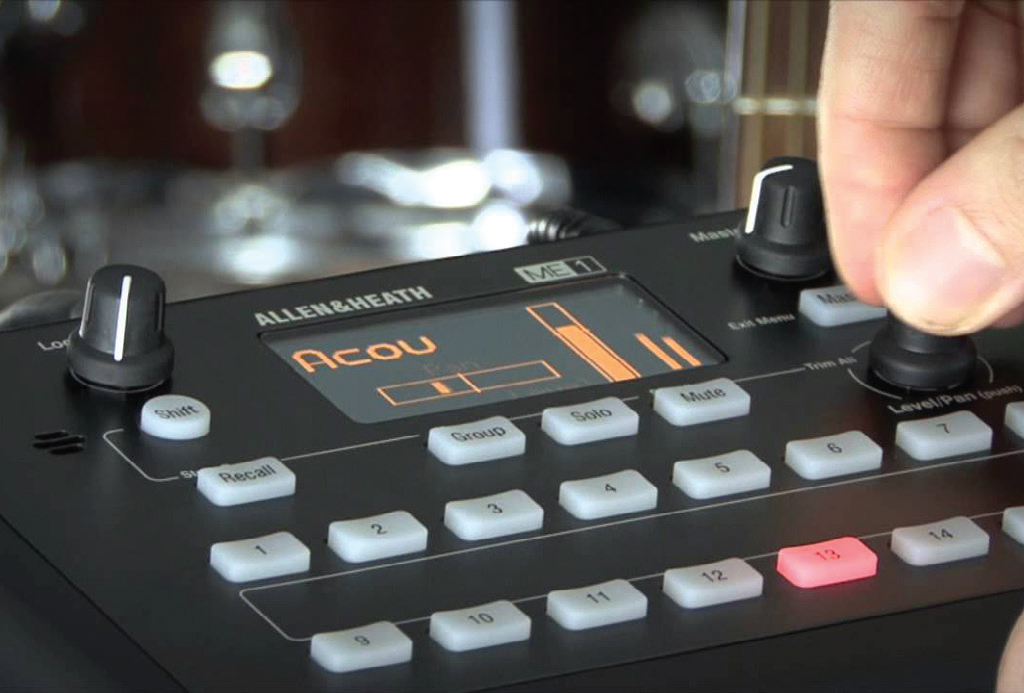If you’re learning to run sound, or learning to play on the worship team, one huge part of setting yourself up for success is the monitor mix. So much rides on the ability to hear yourself – and everyone else – clearly.
When you start learning to play an instrument, you get the basics down. How to hold it, how to work it so that it sounds the best, how to play in time, how to get the changes right. Then you learn to play well with others. You ask to join the worship team. You’re in a band. You learn how the parts fit together, how to arrange a song.
But there’s one thing that no one ever taught you. What exactly do you need in your monitor? Someone put an in-ear mixer in front of you or handed you an iPad to make your own monitor changes, but what exactly is it that you’re needing to do? What’s important for you to hear?
It’s not an easy or intuitive task for many people. Especially for singers, who don’t really have gear or equipment to set up, can have a harder time figuring out how to respond to what they’re hearing by moving knobs and buttons.
Therefore, I’ve put together this primer on monitor mixing. Some of it depends on the instrument, and some of it depends on the style of music, and a bunch of it depends on whether you’re using in-ear monitors or stage wedges. I’ll go over more in-depth training on those in another article, but for today let’s set out the goals.
Goal 1: Following The Leader
If you’re playing in the worship team, it’s vital to know where the worship leader is in the song, and where you’re going next. The leader’s vocal is the key to this. Great worship leaders give vocal cues before the next section, not only for the congregation and the screens person, but the band too.
The lead instrument (whether played by the worship leader or someone else) can give musical clues as well. Clearly hearing the worship leader’s vocal and a lead instrument provide cues as to the intensity they’re wanting, whether they bring it down to a whisper or if they’re starting to ramp up to the chorus. The lead vocal and the instrument driving the song provide the roadmap.
Goal 2: Playing In Time
There are two parts to playing in time. On a big picture level, you’re staying together at the right chord change in the right section. The lead instrument supplies that information. On a micro-level, you’re playing tightly in time with each other – the hits and the subdivisions are happening as closely together as possible.
You definitely need some drums in the monitor mix to be able to stay in time. Kick, snare, and hi-hat are key downbeat, backbeat and subdivision elements, so if you have the chance, put those in the mix first. Overheads and toms can be helpful, but if you’re running monitor wedges, those can make the mix very noisy and increase stage volume to problematic levels.
If you’re working with in-ear monitors, learn to play with a click track and use it as much as possible. This makes it so everyone is aiming for the same target with their timing. It also means that when the drums and other rhythmic elements drop out, the singers and other players can keep the tempo going consistently, making re-entering the song seamless.
Goal 3: Playing In Tune & With Great Tone
You must be able to hear yourself clearly enough to know that your part fits, especially with regard to tuning. If you’re playing a non-fretted or keyed instrument (singing, strings, etc.), it’s vital be able to tune yourself to the rest of the band, which is hopefully also in tune.
Your tone also matters to ensure that you’re fitting together with everyone else. If you can only hear yourself and nothing else (or little else), there’s no reference to how you sound in context.
Your intervals might be perfect, but if they’re not in-tune related to everyone else, you’ll sound really bad. Your guitar tone might sound super full and bright and shimmery, but if it’s covering up the piano or the vocals, you’re not being a great team player. Having a well-balanced monitor mix helps you know how you’re fitting in with everyone else.
Isolation Is Good (And Bad)
With monitor wedges, be careful that they aren’t too loud or too bassy so that the noise from the stage doesn’t spill over to the room and make clarity in the front-of-house mix more difficult. So, with in-ear monitors reducing stage noise, musicians and singers can get it as loud as they want without it affecting other people and/or the FOH mix.
That’s a win!
But it’s also potentially problematic. If your monitor mix is awful, you’re the only person affected by it! With certain in-ear monitoring systems, you might be the only one who can know, unless someone plugs into your mix. You might have a major monitor mix problem that’s keeping you from playing and singing at your best, and nobody even knows.
Further, you might be destroying your hearing with a mix that’s too loud or too harsh, and nobody knows that either – not even you. If you’re unsure, have someone else listen to your mix to find out if it’s causing problems. Hearing loss isn’t easy to overcome.




















